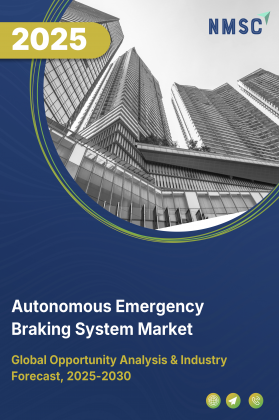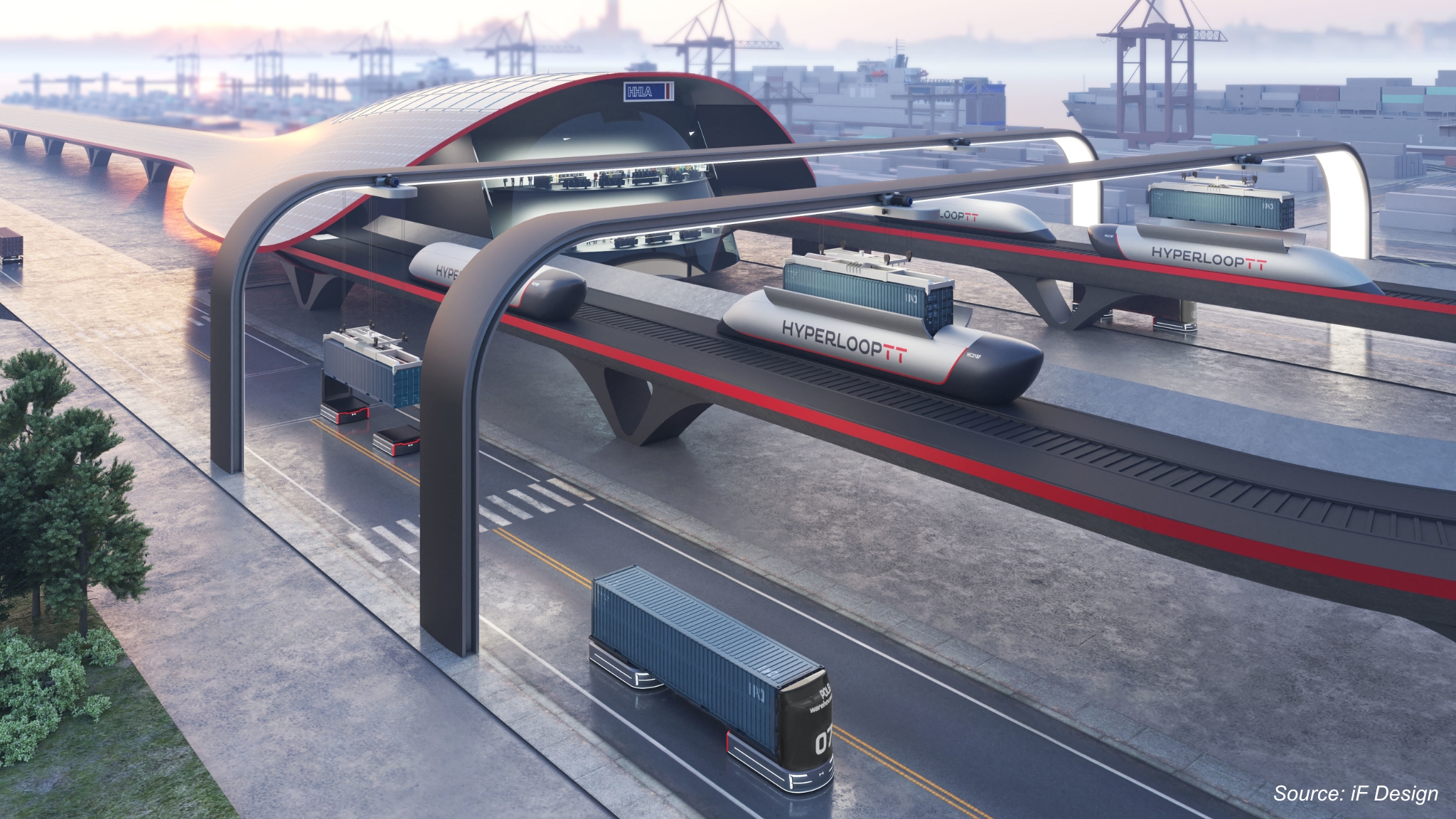
Railway Inspection Robot Market by Type (Autonomous Robots, Non-Autonomous Robots), by Train Type (High-Speed Trains, Others), by Technology (Sensors and Imaging Technology, AI and Machine Learning), by Deployment (Rail-Guided Robots, Fixed Inspection Systems), by Application (Track Inspection Robots, Bridge Inspection Robots, Others), by End User (Railway Operators, Maintenance Service Providers, Government and Regulatory Bodies) – Global Opportunity Analysis and Industry Forecast, 2025–2030
Industry Overview
The global Railway Inspection Robot Market size was valued at USD 1.96 billion in 2024 and is predicted to reach USD 2.24 billion by the end of 2025. The industry is predicted to reach USD 4.35 billion by 2030 with a CAGR of 14.2% from 2025 to 2030.
The market is witnessing robust growth, driven by increasing government-backed railway modernization initiatives, heightened focus on safety, and rising maintenance investments. Expanding rail networks, aging infrastructure, and stricter safety regulations are pushing operators toward automated solutions that deliver accurate, real-time monitoring and predictive maintenance.
The adoption of inspection robots enables faster defect detection, reduced downtime, and improved operational efficiency, aligning with the industry’s shift toward automation and digital transformation. However, high initial costs and integration complexities pose adoption challenges, particularly for smaller operators.
Looking ahead, advancements in AI-powered autonomous inspection systems present significant opportunities, enabling round-the-clock, data-driven maintenance strategies that enhance reliability, reduce operational risks, and support the long-term modernization of global rail networks.
Surge in Government-Funded Railway Modernisation Drives the Market
One of the key driving forces for the railway inspection robot market growth is the increasing scale of government-backed railway modernisation initiatives. Public agencies are investing heavily in upgrading rail infrastructure to enhance safety and efficiency, creating a demand for automated inspection technologies.
For instance, according to the U.S. Department of Transportation (DOT) allocated USD 2.4 billion in 2024 for 122 rail improvement projects across 41 states, emphasising the integration of robotic systems for track and infrastructure monitoring. These government efforts significantly expand the adoption of railway inspection robots, ensuring safer and more reliable rail networks.
Growing Focus on Rail Safety and Maintenance Investments Boosts Market Expansion
The growing focus on rail safety and rising investments in maintenance are driving the railway inspection robot market expansion, as governments and rail operators worldwide prioritize infrastructure reliability, regulatory compliance, and passenger safety. Aging rail networks, increasing traffic volumes, and stricter safety standards are prompting higher spending on advanced inspection solutions that enable accurate, real-time monitoring and predictive maintenance.
Railway inspection robots reduce human error, improve efficiency, and minimize service disruptions, making them a cost-effective tool for proactive asset management. This trend, supported by large-scale modernization programs and expansion of rail networks, is significantly boosting market adoption.
Growing Demand for Automated Infrastructure Monitoring Fuels Market Growth
The growing demand for automated infrastructure monitoring is fuelling the market, as rail operators increasingly adopt advanced technologies to ensure continuous, accurate, and efficient assessment of tracks, tunnels, bridges, and signalling systems. Manual inspections are time-consuming, labour-intensive, and prone to human error, whereas automated inspection robots offer high-speed data collection, real-time defect detection, and predictive maintenance capabilities.
This shift is driven by the need to enhance operational safety, reduce downtime, and optimize maintenance schedules, especially in the context of expanding rail networks and aging infrastructure. As automation becomes integral to modern railway management, the adoption of railway inspection robots is accelerating, contributing significantly to industry growth.
High Initial Costs and Integration Challenges Restrain the Market
High initial costs and integration challenges are restraining the market, as the deployment of these advanced systems requires substantial upfront investment in robotics, sensors, software, and supporting infrastructure. Smaller rail operators, particularly in developing regions, face budget constraints that limit their ability to adopt such technology.
Additionally, integrating inspection robots with existing rail operations, legacy monitoring systems, and diverse track conditions be complex, requiring specialized expertise and potentially causing operational disruptions during implementation. These financial and technical barriers slow the pace of adoption, especially among operators with limited resources or less urgent modernization needs, thereby constraining overall market growth.
Development of AI-Powered Autonomous Inspection Robots Creates Future Market Growth Opportunities
The development of AI-powered autonomous inspection robots presents a significant growth opportunity for the market, as advancements in artificial intelligence, machine learning, and computer vision enable more accurate defect detection, predictive maintenance, and adaptive decision-making without human intervention.
These next-generation robots analyse vast amounts of inspection data in real time, identify anomalies with higher precision, and learn from historical patterns to optimize maintenance schedules. By reducing reliance on manual oversight and enabling fully automated, round-the-clock monitoring, AI-powered solutions greatly enhance operational efficiency, safety, and cost savings. As rail operators worldwide seek smarter, more proactive maintenance strategies, the integration of AI into inspection robotics is poised to unlock new adoption potential and expand market reach.
Market Segmentation and Scope of the Study
The railway inspection robot market report is segmented by type, train type, technology, deployment, application, end users, and regions. By type, the market is categorized into autonomous robots, non-autonomous robots, remotely operated robots, and semi-autonomous robots. Train type segmentation includes high-speed trains, commuter trains, freight trains, metro trains, and others. By technology, the market is classified into sensors and imaging technology, AI and machine learning, IoT connectivity, and navigation and locomotion technology. Deployment options cover rail-guided robots, fixed inspection systems, and non-rail-guided robots. Applications include track inspection robots, bridge inspection robots, tunnel inspection robots, train inspection robots, safety and security inspection robots, overhead line inspection robots, station infrastructure inspection robots, visual inspection, ultrasonic inspection, thermal inspection, quality inspection, and others. End users comprise railway operators, maintenance service providers, and government and regulatory bodies. Regional analysis spans North America, Europe, Asia-Pacific, and the Rest of the World.
Geographical Analysis
In North America, a key driver for the railway inspection robot market share is the modernization of aging rail infrastructure to meet stringent safety regulations and support growing freight and passenger demand. Many U.S. and Canadian rail networks have been in operation for decades, requiring frequent inspections and upgrades to ensure safety, reliability, and regulatory compliance set by agencies such as the Federal Railroad Administration (FRA) and Transport Canada.
Railway inspection robots enable faster, more accurate, and cost-effective monitoring compared to manual methods, helping operators detect defects early, prevent accidents, and minimize service disruptions. This need for efficient, technology-driven maintenance solutions is accelerating adoption across the region.
In Europe, a major driver of the market is the region’s strong commitment to enhancing railway safety, operational efficiency, and sustainability, backed by strict regulations and extensive rail modernization programs such as the EU’s Trans-European Transport Network (TEN-T).
Many European countries are expanding high-speed rail lines and upgrading cross-border connections, requiring frequent, precise inspections to maintain safety standards and operational reliability. Railway inspection robots provide automated, real-time monitoring that aligns with the EU’s push for advanced, sustainable transport solutions, enabling operators to reduce downtime, improve maintenance efficiency, and meet rigorous compliance requirements.
In Asia-Pacific, the sector is growing because of the adoption of smart and digital railway technologies as part of regional initiatives to modernize transportation systems. Governments and rail operators are increasingly integrating IoT, big data analytics, and automation into railway operations to enable predictive maintenance, real-time monitoring, and improved asset management.
Railway inspection robots equipped with advanced sensors and AI capabilities align perfectly with these smart rail strategies, allowing operators to detect faults early, reduce operational costs, and enhance passenger safety. This push toward digital transformation is accelerating the adoption of inspection robots across the region.
In the Rest of the World (RoW), a key driver of the market is the growing investment in railway infrastructure to improve connectivity, trade efficiency, and passenger transport in emerging economies. Regions such as the Middle East, Africa, and Latin America are undertaking new rail projects and rehabilitating outdated networks to support economic growth and regional integration.
These developments require advanced inspection solutions to ensure safety, reliability, and compliance with international standards. Railway inspection robots provide a cost-effective and efficient alternative to manual inspections, enabling operators in these markets to maintain high safety levels while optimizing maintenance operations.
Strategic Innovations Adopted by Key Players
Key players in the railway inspection robot industry are accelerating global expansion through upscale brand launches, service diversification, and strategic partnerships. For instance, In July 2025, Waygate Technologies, a Baker Hughes company, launched the Krautkrämer WheelStar RPS, an automated robotic ultrasonic system designed for dismantled train wheelset inspections. Featuring advanced matrix phased array technology, the solution marks a strategic expansion of Waygate’s high-precision NDT capabilities into rail maintenance workflows. The company aims to leverage its established NDT expertise to secure workshop contracts and OEM service agreements that demand certified, repeatable inspection standards.
Key Benefits
-
The report provides quantitative analysis and estimations of the industry from 2025 to 2030, which assists in identifying the prevailing market opportunities.
-
The study comprises a deep dive analysis of the current and future railway inspection robot market trends to depict prevalent investment pockets in the sector.
-
Information related to key drivers, restraints, and opportunities and their impact on the market is provided in the report.
-
Competitive analysis of the players, along with their market share is provided in the report.
-
SWOT analysis and Porters Five Forces model is elaborated in the study.
-
Value chain analysis in the market study provides a clear picture of roles of stakeholders.
Railway Inspection Robot Market Key Segments
By Type
-
Autonomous Robots
-
Non-Autonomous Robots
-
Remotely Operated Robots
-
Semi-Autonomous Robots
By Train Type
-
High-Speed Trains
-
Commuter Trains
-
Freight Trains
-
Metro Trains
-
Others
By Technology
-
Sensors and Imaging Technology
-
AI and Machine Learning
-
IoT Connectivity
-
Navigation and Locomotion Technology
By Deployment
-
Rail-Guided Robots
-
Metal Wheeled Robots
-
Crawler Robots
-
-
Fixed Inspection Systems
-
Non-Rail-Guided Robots
-
Drones
-
Mobile Ground Robots
-
By Application
-
Track Inspection Robots
-
Bridge Inspection Robots
-
Tunnel Inspection Robots
-
Train Inspection Robots
-
Safety and Security Inspection Robots
-
Overhead Line Inspection Robots
-
Station Infrastructure Inspection Robots
-
Visual inspection
-
Ultrasonic inspection
-
Thermal inspection
-
Quality inspection
-
Others
By End Users
-
Railway Operators
-
Passenger Rail Operators
-
Freight Rail Operators
-
Track Operators
-
Bridge and Tunnel Operators
-
-
Maintenance Service Providers
-
Government and Regulatory Bodies
By Region
-
North America
-
The U.S.
-
Canada
-
Mexico
-
-
Europe
-
The UK
-
Germany
-
France
-
Italy
-
Spain
-
Denmark
-
Netherlands
-
Finland
-
Sweden
-
Norway
-
Russia
-
Rest of Europe
-
-
Asia Pacific
-
China
-
Japan
-
India
-
South Korea
-
Australia
-
Indonesia
-
Singapore
-
Taiwan
-
Thailand
-
Rest of Asia Pacific
-
-
RoW
-
Latin America
-
Middle East
-
Africa
-
Key Players
-
Shenhao
-
Railway Robotics
-
Boston Dynamics
-
Servail
-
Unitree
-
Future Maintenance Technologies
-
Guozi Robotics Co., Ltd.
-
Yijiahe Technology Co., Ltd
-
Waygate Technologies (a Baker Hughes company)
-
ROSEN NXT
-
Weston Robot Pte. Ltd.
-
Loccioni S.p.A.
-
Changsha Oneway Robot Co., Ltd.
Report Scope And Segmentation
|
Parameters |
Details |
|
Market Size in 2025 |
USD 2.24 Billion |
|
Revenue Forecast in 2030 |
USD 4.35 Billion |
|
Growth Rate |
CAGR of 14.2% from 2025 to 2030 |
|
Analysis Period |
2024–2030 |
|
Base Year Considered |
2024 |
|
Forecast Period |
2025–2030 |
|
Market Size Estimation |
Billion (USD) |
|
Growth Factors |
|
|
Countries Covered |
28 |
|
Companies Profiled |
15 |
|
Market Share |
Available for 10 companies |
|
Customization Scope |
Free customization (equivalent up to 80 working hours of analysts) after purchase. Addition or alteration to country, regional, and segment scope. |
|
Pricing and Purchase Options |
Avail customized purchase options to meet your exact research needs. |

















 Speak to Our Analyst
Speak to Our Analyst

























